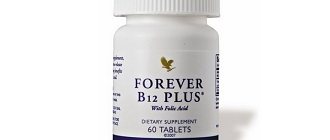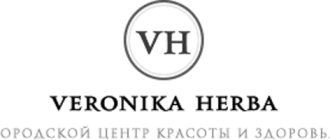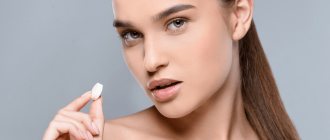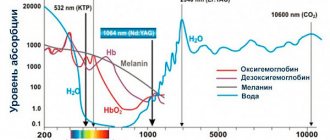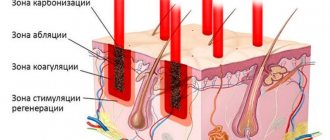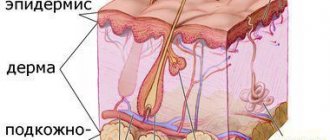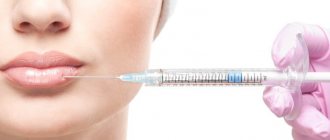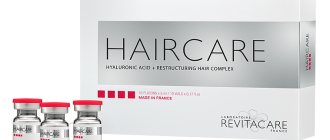What is vitamin C
Vitamin C is an essential element that performs many functions in the body. Unlike most animals, the human body does not produce this vitamin. It is obtained from food. It is found in citrus fruits, many berries, sweet peppers and leafy greens.
While vitamin C may not be a cure for the common cold, it does offer benefits such as boosting your immune system, helping fight cardiovascular disease, prenatal problems, eye conditions, or even wrinkles.
This is the most common antioxidant. That is, skin cells accumulate this element in order to subsequently protect themselves from damage caused by the environment. These include UV radiation from the sun, pollution and other factors that trigger the formation of free radicals in the body. Free radicals are unstable molecules that take electrons from cells, thereby damaging them. Do you know what else influences their education? Smoking. Therefore, many smokers suffer from dry skin, premature aging and a large number of wrinkles before the age of thirty.
How to prevent vitamin deficiency
With a lack of vitamin C, pale and dry body skin and intense peeling develop. Spider veins appear on the face. Hair becomes dull and brittle and actively falls out. The nails peel and crumble, and horizontal white stripes appear on them. Crusts and painful bleeding cracks are observed on the lips.
To prevent such symptoms, you need to carefully monitor the balance of vitamin C in the body. It is advisable to increase the content of fresh vegetables and fruits in the diet, especially black currants, bell peppers, and citrus fruits. If, while following a fortified diet, symptoms of ascorbic acid deficiency persist, doctors recommend using balanced nutritional supplements that contain the optimal daily amount of the vitamin.
Benefits of Vitamin C for Skin
Vitamin C is especially important for maintaining healthy skin appearance. Skin cells need this element because with its help they fight stress caused by various factors.
It promotes the production of collagen, the protein that makes up most of the outer layer of skin. Many symptoms of vitamin C deficiency are caused by impaired synthesis of this protein.
This element also inhibits the activity of tyrosinase, an enzyme that converts the amino acid tyrosine into melanin. Melanin is the pigment that gives skin color. Most often it is produced under the influence of UV rays. A study was conducted in 2022 that examined the effects of topical vitamin C on sun-induced age spots. Scientists have found that it can potentially help relieve signs of sun damage.
It also replenishes vitamin E. This is another important antioxidant that protects the skin from oxidative damage. Vitamin E levels decrease significantly after sun exposure. But vitamin C is able to replenish these reserves.
Salon skin treatments
Vitamin C is beneficial for facial skin when administered by injection, which is successfully used in mesotherapy. The substance is one of the components of cosmetic cocktails that are used to smooth out age-related wrinkles and crow's feet, brighten the complexion and get rid of age spots. To consolidate the result, cosmetologists perform 4-5 similar procedures.
Salons offer chemical peelings and skin scrubbing with special compounds that contain ascorbic acid, fruit acids and enzymes. The procedure is aimed at opening pores and removing sebum, smoothing out the microrelief. These peels are atraumatic and suitable for most women.
How does vitamin C affect facial skin?
Not much research has been done, but the findings suggest that vitamin C:
- can reduce the level of sun damage. If applied to the face, it can reduce the number of age spots as it suppresses the production of melanin, which is responsible for darkening the skin.
- can prevent skin sagging. Declining collagen production with age is one of the causes of aging. We wrote above that it helps synthesize this protein, therefore, it has a beneficial effect on skin tone.
- protects against sun damage. With age, the skin becomes thinner and loses its elasticity. This leads to the formation of wrinkles. Although their appearance is often determined genetically, constant exposure to UV rays destroys collagen and elastin, which leads to premature aging of the skin.
- Helps speed up wound healing and reduce scarring.
Myths about vitamins
Vitamins for skin
Surprisingly, from the age of 25 the process of skin aging begins. Drooping of the eyelid (ptosis), small wrinkles on the face appear due to a decrease in the production of collagen and hyaluronic acid, which are companions of youth. The issue of maintaining healthy and youthful skin must be approached comprehensively. Cosmetic procedures will be much more effective if you add internal effects to them. Additional intake of vitamins and minerals for the skin will enhance the positive results from the use of high-quality cosmetics and hardware procedures.
All the necessary vitamins for the skin and their effects
Biologically active supplements and vitamin-mineral complexes are used today to prevent a whole range of diseases. The introduction of vitamins into the diet helps maintain skin health, prevent and slow down its aging.
Key vitamins for facial skin:
- Vitamin A. Vitamin A plays an important role in the human body; one of its main tasks is to participate in metabolism and improve cell regeneration. It accelerates skin renewal processes, improves protective function and allows it to maintain the water balance necessary for smoothness and tone. With a sufficient amount of vitamin A, the production of the main building materials of the skin - elastin and collagen - increases. This is what allows you to maintain a pleasant complexion and slow down the appearance of wrinkles.
- Vitamin E is a group of compounds consisting of tocopherols. Together with vitamins A, D and K, it belongs to the fat-soluble group. Vitamin E is popularly called the “vitamin of youth”. It not only slows down the aging process and relieves irritation, but also neutralizes free radicals thanks to its antioxidant properties. In addition, it has nourishing and moisturizing properties, helping to retain moisture in the skin. In the presence of dermatological disorders, vitamin E is one of the first to come to the aid of damaged skin.
- Vitamin B3 or PP (niacin) or in other words nicotinic acid is a water-soluble B vitamin that has a positive effect on many body systems, including the nervous and endocrine systems, promoting their proper functioning and the production of sex hormones, cortisol, thyroxine and insulin, deficiency of which negatively affects the condition of facial skin. The effect of nicotinic acid on the epidermis is a recent discovery by scientists. The main advantage of niacin is its lifting effect, which is not achieved by other vitamins. Nicotinic acid helps neutralize swelling.
- Vitamin D3. Vitamin D3 is a fat-soluble compound. It is generally accepted that its effect is associated exclusively with the prevention of rickets and osteoporosis. However, its effect on the body is much broader. It promotes the production of collagen, a dramatic decrease in which is observed in women during menopause. Collagen slows down the aging process, gives the skin radiance and a healthy appearance.
- Vitamin B1 (thiamine). Vitamin B1 has a significant effect on the functioning of the nervous system and muscle tone. It is worth noting that thiamine is also necessary for the epidermis. Peeling, irritation and fine wrinkles are indicators of thiamine deficiency. Vitamin B1 helps prevent acne and hair loss.
- Vitamin B2 (riboflavin). A vital vitamin for the normal functioning of all body systems. Riboflavin is the key to healthy skin. It supports respiratory and nutritional processes in the cells of the epidermis, allowing the skin to maintain youth for a long time. Vitamin B2 makes it possible to forget about acne and dryness.
- Vitamin C (ascorbic acid). It is a powerful antioxidant that promotes collagen production. Thanks to its effect, the skin becomes elastic and less prone to pigmentation. Vitamin C prevents the formation of melanin, which protects the skin from ultraviolet radiation and, as a result, from the formation of age spots. An interesting fact is that vitamin C cannot be produced independently in the human body. That is why its regular use is necessary for modern man.
Microelements are the key to healthy skin. The following microelements help maintain its attractive appearance:
- Zinc. An important trace element for humans. It is directly related to metabolism in the human body (proteins, fats and carbohydrates). It is part of all cells of the body and takes part in the formation of cellular mediators. The antioxidant properties of zinc help accelerate skin restoration processes; the microelement also reduces the severity of wrinkles and sagging skin.
- Magnesium. Having an optimal level of magnesium in the body makes it possible to guarantee the health of the epidermis. It directly affects the process of adequate hydration inside cells (the so-called cytosol) and participation in several enzymatic reactions at the molecular level. Magnesium helps eliminate flaking, relieve itching, and soothe irritation associated with acne or allergic rashes.
- Selenium. The trace element is an integral component of metabolic processes at the cellular level. The proper functioning of most enzymes also depends on the regular intake of selenium into the body. Its main function is to slow down the aging process throughout the body, in particular in the skin. Combined with vitamin E, selenium is a powerful antioxidant that prevents skin cell damage and helps slow down the aging process.
- Manganese. It has a nutritional effect and is involved in many vital processes in the body, for example, in the processing of carbohydrates and proteins. It is impossible not to take into account the fact that the formation of bone and cartilage tissue in the body is impossible without the presence of manganese. A lack of magnesium in the body is manifested by redness and pigmentation on the skin.
- Iron. Constant fatigue is the first alarm bell indicating iron deficiency. It affects the processes of energy production and detoxification. It also counteracts free radicals, protecting the skin from premature aging.
All of the above vitamins and minerals for the skin are contained in the Vitrum® Beauty Plus complex. An integral part of the complex are herbal components: horsetail extract, kelp, peppermint, anise, lavender. It was not by chance that herbal supplements were included in the complex; they have a number of different properties. For example, rosemary leaf extract and lavender herb help remove excess fluid from the body and reduce swelling, cinnamon tree bark extract helps normalize digestion, and ginger extract relieves menstrual pain. Some plant extracts are a natural source of silicon, which further stimulates collagen production.
Causes and types of skin aging
What causes skin aging? Why do pigment spots and wrinkles begin to appear and skin tone lose?
- Lack of moisture. The water-lipid mantle is located on the surface of the skin and is a protective barrier. In youth, lipids are produced in the required quantities. Even in the presence of unfavorable external influences, the mantle actively and independently regenerates. With age, the level of lipid production stops, as a result, wrinkles, peeling and dull complexion appear.
- Exposure to free radicals. They are molecules with increased oxidative capacity. Radicals negatively affect collagen molecules, as a result of which it loses its properties, so necessary for maintaining youthful skin. Daily intake of antioxidants can combat the effects of free radicals.
From about 25 years of age, there is a decrease in collagen production. Each subsequent year its concentration decreases by 1%.
- Exposure to ultraviolet radiation. Sun rays are an irreplaceable source of vitamins D. But prolonged exposure to ultraviolet radiation on the skin leads to photoaging, which affects the deep layers of the epidermis. As a result, the formation of age spots, the appearance of wrinkles and rosacea.
The main types of skin aging are:
- "Tired". This type of aging is characterized by swelling of the face and area around the eyes, and the presence of small expression wrinkles.
- "Finely wrinkled." Skin aging of this type is invariably accompanied by dryness and the appearance of wrinkles around the lips and eyes. An increase in pores is observed.
- "Large-wrinkled." The change in the oval of the face is clearly expressed, a double chin and nasolabial folds appear, as well as deep eyebrow wrinkles.
- "Combined". Includes most of the signs characteristic of the first three types of aging.
- "Muscular." Accompanied by the appearance of nasolabial wrinkles and folds on the eyelids.
- The relief of the face increases.
What vitamins and microelements help maintain skin elasticity and health? Vitamin complexes used for this purpose should include vitamin A, B, C, as well as selenium, zinc, and iron. The Vitrum® Beauty Plus complex contains 13 vitamins necessary to maintain skin tone, more than 9 minerals and 14 herbal complexes.
What foods contain vitamins and minerals that are good for the skin?
The most beneficial vitamins and minerals for the skin are found in foods that should be included in your daily diet:
- Vitamin A: fatty fish, liver, eggs, carrots, red apples.
- B vitamins: beef, pork, legumes, bananas, almonds, tomatoes.
- Vitamin C: pineapple, orange, broccoli, strawberry, papaya.
- Vitamin E: sunflower, peanut oil, fish oil, eel.
- Vitamin D: dairy products, as well as eggs, sardines, salmon.
The skin needs not only vitamins, but also minerals, the most useful of which can be found in the following products:
- Zinc: barley, peanuts, pistachios, buckwheat, pork.
- Magnesium: soy, cashew, seaweed, oats.
- Selenium: pink salmon, beans, sunflower seeds, cottage cheese.
- Iron: oysters, beef liver, beans, peas.
In addition to signs of aging, many women are concerned about the appearance of dry skin and the associated discomfort, which negatively affects the external condition of the epidermis. That is why many are interested in the question: “What vitamins should I take if my body skin is dry?” Vitamins A, E, B and C are the main helpers in solving this problem.
It is extremely difficult to obtain from food all the vitamins and microelements necessary for the skin, since a person would have to eat kilograms of food every day.
Taking the Vitrum® Beauty Plus complex helps the body receive the vitamins and minerals necessary to maintain healthy skin. Back
Forms and uses of vitamin C in cosmetics
Some manufacturers add this element to the finished product, and some create a vitamin powder that can be added to any cosmetics. It's important to know that not all forms of vitamin C are suitable for the skin. It is divided into stable and unstable.
For the element to be effective, it must be in the form of powder or ascorbic acid. In the composition of the product it can be recognized by the name Ascorbic acid. However, this acid is unstable and is easily destroyed by heat, oxygen or light. The downside is that it can cause irritation as it is often used at a low pH.
The benefits include the fact that it stimulates collagen synthesis, increases skin elasticity and firmness, reduces pigmentation and post-acne, and evens out facial skin tone.
In cosmetics, the vitamin is used in the form of L-ascorbic acid, scorbyl-6-palmitate and magnesium ascorbyl phosphate. The first is considered the most stable. It is water soluble and at the same time as effective as regular ascorbic acid.
The quality and effectiveness of the product largely depends on the form of vitamin C used. Scientists believe that the best results can be achieved if the following factors coincide:
- L-ascorbic acid is used
- Its concentration ranges from 10 to 20%
- pH value does not exceed 3.5
But cosmetics alone will not rid you of problem skin. Come to the “Flourish” marathon to learn not only about the best massage techniques, but also about how nutrition affects the condition of the skin. Read more on the marathon page.
Important: The maximum amount of vitamin C taken orally should not exceed 2000 mg per day for adults.
Ascorbic acid for the face and nasolabial folds under a mesoscooter at home
It is possible to carry out the mesotherapy procedure independently. There are mesoscooters on sale with different characteristics. A roller with sharp titanium needles is rolled over the surface, slightly piercing it. A pre-applied solution of ascorbic acid from an ampoule gets into the punctures, reaches the subcutaneous layers and starts renewal processes.
The roller is applied to problem areas on the face: nasolabial folds, unclear contours, and in the area of wrinkles. Exposure time: 10 minutes with light pressure. The procedure causes a burning sensation, but there should not be severe pain. The redness goes away the next day, the result is visible immediately.
How to use vitamin C for your face
The method of application depends on what form of vitamin C you are going to apply to your face.
If it is a powder, make sure it is for topical use and not for consumption. Otherwise it will not be effective at all.
How you can nourish your facial skin with vitamin C:
- if it is a powder, take a small amount. There will probably be information on the packaging about how much is recommended to use.
- Mix the powder with serum or lotion in your palm. Can be mixed with squalane.
- it is necessary that vitamin C constitute at least 8% of the product received, but not more than 20%, otherwise it will cause skin irritation.
- Apply the resulting solution to your face or body.
Be sure to do an allergy test: 24 hours before the procedure, apply a small amount of powder to the skin.
Traditional recipes for beautiful skin
It is advisable to use all of these methods 2-3 times a week. You should not get too carried away with masks with liquid ascorbic acid, so as not to cause allergic reactions. The most effective natural recipes for skin with vitamin C:
Against crow's feet
In a bowl, thoroughly stir 2 tsp. yogurt and 1 tsp. sugar until all grains are dissolved, then add 1 ampoule of 10% ascorbic acid solution and 2-3 drops of neroli essential oil. For ease of application, cut cotton pads in half, spread the product on them, and apply to the skin around the eyes for 10 minutes. After washing off the mixture, it is recommended to use a moisturizer.
To tighten pores
3 tbsp. l. Blue or white clay powder is mixed with 1 tbsp. l. boiled water and an ampoule of ascorbic acid. The resulting paste is distributed over the entire surface of the face, avoiding the area around the eyes. After 20 minutes, the product is washed off with water and a basic moisturizer is applied.
To get rid of pigmentation
To lighten post-acne and freckles, mix 0.5 tbsp. l. cottage cheese and 1 tbsp. l. black tea, add liquid from one ampoule of vitamin C and a couple of drops of sea buckthorn oil to the mask. Apply the product for 20 minutes, then rinse your face with water.
Tonic
For aging skin, mix 1 tsp. sour cream and honey, add 1 ampoule of vitamins C and A. The mask is applied to the entire face except the area around the eyes for 15 minutes. Wash off with clean water.
Anti acne
It is necessary to crush 5 tablets of activated carbon into powder, add to them 1 ampoule of ascorbic acid and a teaspoon of boiled water, stir everything well. Apply the resulting paste to the affected areas of the face, leave for 25 minutes, and then rinse with cool water.
Peeling with ascorbic acid at home (video):
Peeling with ASCORBIC acid for PERFECT facial skin.
Ampoules for face
Encapsulated forms are created in order to solve the problem of instability of forms and their oxidation. These formulas often contain pure ascorbic acid, which definitely should not be used on sensitive or irritated skin.
This approach works much faster than creams. It is recommended to be used as additional care for severe pigmentation, dull skin or post-acne. After use, smooth and elastic skin and a reduction in wrinkles are expected.
What should the product be in the ampoule:
- the concentration of the vitamin is no more than 10%, in this case the complexion is evened out, the product fights free radicals and slows down skin aging
- contains bio-peptides that stimulate collagen production
- high molecular weight hyaluronic acid is present, which is necessary to maintain the skin barrier function
- pH value is 2.8
Application options
All methods of using vitamin C in dermatology and cosmetology can be divided into 3 large groups:
- Traditional methods. Masks, serums and other recipes with vitamin C for the face that can be prepared at home are popular among women. The advantage of these products is their low cost, ease of preparation and use. Among the disadvantages is the need to prepare a mask or peeling before each procedure. It is undesirable for women with a tendency to allergic reactions to use such products.
- Cosmetics with vitamin C. Many cosmetic companies add ascorbic acid to their effective skin care formulas. There are several areas of cosmetic products: anti-aging and rejuvenating lines, whitening and exfoliating tonics, soothing cosmetics after aggressive procedures. They separately produce medicinal pharmaceutical products with ascorbic acid, which are intended for the treatment of inflammation and other problems.
- Cosmetology procedures. Ascorbic acid is included in cosmetic cocktails that are used by professionals for mesotherapy. The vitamin is also used when performing chemical facial peels. Such procedures are highly effective, but they have many contraindications and possible adverse reactions.
Concentrates
This is practically the same as solutions in ampoules. They differ in the amount of active substances in the composition. They also cannot be kept in air for a long time; they oxidize quickly, but they also act relatively quickly.
Concentrates should be applied carefully, because a large number of active components can lead to severe allergic reactions.
The application of concentrates should be combined with self-massage so that the active components are better absorbed into the skin. We recommend using techniques from special intensive courses.
Moreover, it is recommended to apply concentrates in combination with creams, as they penetrate into the deep layers of the skin and can even harm it.
Hydrogel patches with vitamin C
Patches have become much more popular in recent years. The components of the patches instantly penetrate the skin around the eyes. They are often used against puffiness and blueness under the eyes.
Also used to get rid of wrinkles that sometimes appear from lack of moisture. In such cases, two types of patches can help: with hyaluronic acid or with gold. The former contain antioxidants, peptides and plant extracts. They cope well with pigmentation and wrinkles. And the second ones can be kept for up to 50 minutes. They contain metal ions, vitamins and glycerin.
There are several types of patches:
- Hydrogel. They contain more than 90% water and hyaluronic acid. They fit tightly to the eyelid, and the active components penetrate deep into the cells.
- Fabric. This is a fabric that contains a high concentration of vitamins and oils. Unlike hydrogel patches, they do not fit tightly to the skin, which makes the effect much worse.
- Collagen. This type helps to perform several functions at once: moisturize, remove swelling and wrinkles.
Patches cannot be used for conjunctivitis, cuts, abrasions and rosacea.
Contraindications
It is not advisable to use products with acid in the following cases:
- if there is damage: abrasions, cuts, inflammation, etc.;
- individual sensitivity to the drug. The skin may burn or become hot, in such cases they try to reduce the concentration or refuse to use it;
- spider veins on the face, injured, dilated vessels;
- tendency to form blood clots;
- diabetes mellitus of any type;
- The skin near the eyes must be protected from the strong effects of acid.
In all these cases, a doctor's consultation is required before use for complete safety.
Important: the combination of ascorbic acid with glucose, so beloved by all kids, is completely unsuitable for use on the surface of the skin. This mixture causes rashes, allergies and irritation.
Acid should not be stored in the refrigerator. Opened ampoules cannot be stored for long periods of time; they must be used without delay. Upon contact with metal, the vitamin is instantly destroyed.
